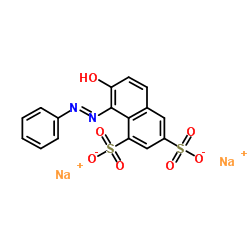Indirect photometric detection of anions in nonaqueous capillary electrophoresis employing Orange G as probe and a light-emitting diode-based detector.
Gustavo A Blanco Heras, Michael C Breadmore, Cameron Johns, Joseph P Hutchinson, Emily F Hilder, Purificación López-Mahía, Paul R Haddad
文献索引:Electrophoresis 29(14) , 3032-7, (2008)
全文:HTML全文
摘要
A method based on indirect photometric detection (IPD) in CE employing a blue LED (473 nm) as a light source and the highly absorbing (478 nm) anionic dye, Orange G, as the probe ion was developed for the sensitive analysis of inorganic and organic anions. The use of nonaqueous solvents was examined as a simple way to reduce the adsorption of the dye onto the capillary wall and to thereby improve the baseline stability. The benefits of this approach were confirmed by experiments using BGEs in methanol (MeOH) and DMSO in which superior baselines were obtained relative to those achieved using aqueous electrolyte systems. A range of commercial LEDs was tested to improve the detection performance, with a difference of 25% in sensitivity being observed between the best and worst performing LED. The final system (4 mM Orange G, 0.05% w/v hydroxypropylcellulose (HPC), 20 mM triethanolamine (TEA) in pure MeOH) exhibited stable baselines and very low LODs (0.10-0.18 microM) for a test mixture comprising nine inorganic and organic anions. These values represent a two- to six-fold improvement over previous studies and the proposed method provides the most sensitive IPD method for the determination of anions using CE published to date. RSDs for ten replicates were in the ranges of 0.42-0.62% for migration time, 1.41-3.46% for peak area and 3.20-5.78% for peak height.
相关化合物
| 结构式 | 名称/CAS号 | 分子式 | 全部文献 |
|---|---|---|---|
 |
酸性橙 10
CAS:1936-15-8 |
C16H10N2Na2O7S2 |
|
Development of a method for the analysis of seven banned azo...
2009-04-15 [Talanta 78(1) , 178-86, (2009)] |
|
Hydrogen peroxide primes heart regeneration with a derepress...
2014-09-01 [Cell Res. 24(9) , 1091-107, (2014)] |
|
Ethylenediamine modified starch as biosorbent for acid dyes.
2009-12-30 [J. Hazard. Mater. 172(2-3) , 1665-70, (2009)] |
|
Purification and characterization of a novel laccase from Co...
2013-02-01 [Mol. Biol. Rep. 40(2) , 1487-94, (2013)] |
|
Novel amphiphilic polymeric ionic liquid-solid phase micro-e...
2014-07-04 [J. Chromatogr. A. 1349 , 24-9, (2014)] |